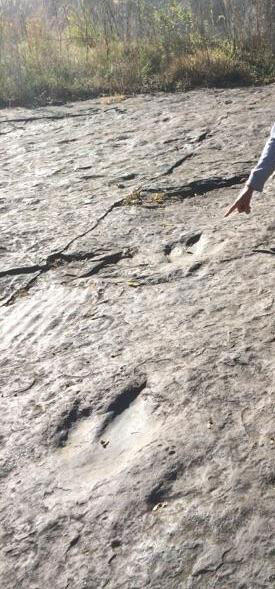Mt. Sugarloaf State Reservation 300 Sugarloaf Street, South Deerfield
Introduction - A View from the Top
Description, format and location - The view from the summit of Mt. Sugarloaf is perhaps the most iconic in all the Connecticut River Valley. See evidence of ancient geological history, human settlement, agricultural, industrial, recreational, and "knowledge economy" land use as well as examples of conserved land. The mountain itself has strong connections with cultural history and was once the site of a vacation-style hotel. Discussion-style format. Done on the lawn or in the pavilion at the summit of Mt. Sugarloaf.
- Ages - Grades K through adult
- Available - Mid-May through mid-October
- Group size - Up to two classroom size groups (up to 50 students).
- Length -10 to 20 minutes
- Curriculum connections - Geologic processes. Local history. Resource management
Local History, Long Ago
Description, format and location - This series of short informational programs and hands-on activities highlight various features of the mountain's history. Select the segments that you want. Done at the summit.
Available - Mid-May through mid-October
- What is a Sugarloaf? Use words and pictures to learn exactly what a “sugarloaf” is.
- Recommended for preK-1. Up to two classroom size groups (50 students). Approximately ten minutes.
- The Legend of the Giant Beaver Hear the story of the Giant Beaver, Hobomuck, and the Pocumtuck people. Learn where to find the Giant Beaver and Hobomuck today. Relate the legend to the landform.
- Recommended for K-5. Up to two classroom size groups (50 students). Approximately 15 minutes.
- Firefighting Through Time - Fire was an ever-present danger at all mountain-top hotels. The one atop Mt. Sugarloaf burned down in 1966. What fire-fighting technique was widely available back then? Why couldn't it save the hotel? Using pictures and text, students build a timeline that shows changes in fire-fighting technology over the past 400 years.
- Recommended for upper elementary. One classroom-size group (up to 25 students). Approximately 20 minutes.
- Bucket Brigade - Fire was an ever-present danger at all mountain-top hotels. The one atop Mt. Sugarloaf burned down in 1966. Why couldn't fire-fighting technology of the time save it? Would a bucket brigade have helped? Students form two "bucket brigade" teams and compete to "extinguish a fire" in the "hotel." This just-for-fun program includes a serious discussion about fire safety and the limitations of technology.
- Recommended for K-5. One classroom-size group (up to 25 students). Approximately 20 minutes.
Other guided program options includeGuided hike to the summit with a few featured nature stops; Guided springtime hike to the summit featuring bird-specific adaptations to three habitats.
- Recommended for K-5. One classroom-size group (up to 25 students) for best learning outcomes. Approximately 45 - 60 minutes.
Teacher-Led Options
Sum of the Parts
Description, format and location - The summit of Mt. Sugarloaf makes a perfect backdrop for this hands-on land-use planning activity. Students work in small teams or "families" and decide how they want to use a piece of riverfront property. They present their plans to the other teams. A subsequent discussion helps everyone understand that we all live downstream. The Regional Educator can supply materials. Adapted from Project WET (Watershed Education for Teachers).
- Ages - Recommended for upper elementary and middle school
- Available - Mid-May through mid-October
- Group size - One classroom-size group
- Length - Approximately 45 minutes
Journaling, poetry, or sketching
Description, format and location - New England's landscapes have inspired writers, poets and painters from the early 1800's onward. The same is true for school groups that visit Mt. Sugarloaf’s summit today. Use a writing prompt, suggest a poem structure, frame a scene, or just let your students' imaginations fly. Done at the summit.
Logistics and Amenities
For information or to schedule your group, please contact Gini Traub, Regional Educator, 617/699-2387; Gini.Traub@mass.gov
Vehicle entrance fee. Large vans OK. Full-size buses park at the base of the mountain because of the steep, curving road. Pavilion rental with advance reservation (wheelchair accessible). Small picnic grove. Very small indoor restroom and bubbler(wheelchair accessible). Viewing tower.
Auto road to summit is paved with steep sections; approximately 1 mile each way.
Trail to summit has some steep rocky and heavily eroded section. One section is not recommended for school groups; we switch to the paved road instead. Approximately 1 mile each way.
